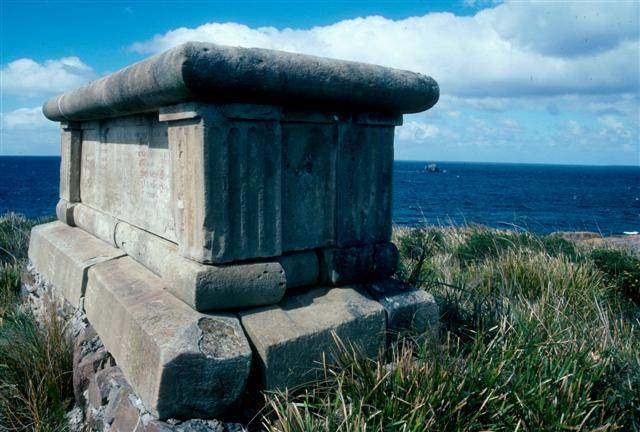Samuel Barnes
Born in Exeter in 1784, he was trained in Exeter and St Bartholomew’s in London. He was a well-respected surgeon first at the West of England Eye Infirmary and then, for 23 years, at the Devon and Exeter Hospital.
He lived at 5 Barnfield Crescent. At 11 pm on Mon 15 Aug 1842 a servant called on him to request him to visit a patient at Eaton Place (on Heavitree Road, opposite the old City Swimming Baths).
He set off on foot along Barnfield Road. Just before the junction with what is now Denmark Road, he was accosted by a young woman who asked him “Will you take company?” to which he did not reply. He then turned left – along what was then just an unlit track across fields – and was followed by two men who attacked and robbed him. They knocked him to the ground and beat him over his face and head before emptying his pockets and running off.
They took six sovereigns, a few other coins and his gold watch. He was cut and bruised, and lost a tooth, but was not seriously injured. He got as far as Paris Street where he was taken home by passers-by, one of whom alerted the police.
At one o’clock the next day, PC William Back arrested two men and a woman at the Red Lion in Chudleigh.
Thomas Westlake, Samuel Houghton and Mary Evans.
They were brought up before the Exeter magistrates at the Guildhall on Friday 19 August. Mary Evans confessed that she had accosted Barnes and that the two men had assaulted and robbed him. She later showed the police where the watch had been buried in a field near Chudleigh.
4 April 1843 Devon Spring Assizes:
All three were found guilty and sentenced to be transported: Westlake and Houghton for life; Evans for 15 years. All were sent to Tasmania.
Thomas Westlake had been born in Crediton in 1821. At the time of his arrest his widowed mother, Martha, aged 70, ran a lodging house in Crediton, where she lived with his sister, Virtuous, and Francis, one of his brothers, a sailor.
(His father, James Westlake had been killed in a fight in Crediton on New Year’s Eve 1833. An itinerant tinker named William Bray returned to Westlake’s lodging house, drunk, and started assaulting his (Bray’s) wife. Westlake intervened. Bray punched him twice; he fell to the ground and was dead within a few minutes.
Bray was found guilty of manslaughter at the Devon Lent Assizes in March and sentenced to transportation for life. The George III sailed from Woolwich on 14 December 1834 for Hobart Tasmania with a total of 308 passengers. Bray was one of the 220 male convicts on board. As the ship neared the equator a fire broke out which destroyed part of the ship's food stores. Thereafter all on board were put on reduced rations. As a result of the poor diet many convicts developed scurvy, from which fourteen convicts had died before the ship reached the coast of Van Diemen's Land on the morning of 12 March 1835.
In order to avoid being blown offshore and thus delaying arriving in Hobart Town, the master decided to enter the torturous D'Entrecasteaux Channel between Bruny Island and the Tasmanian mainland. That evening George III hit a rock and broke up in the heavy swell. The convicts were kept below to allow the women and children to be safely evacuated by the ship's boats. In all, 128 convicts and 5 other passengers perished. Bray was one of the survivors.)

Memorial Stone overlooking the site of the wreck of the George III at Southport Bluff
Little is known of what became of William Bray thereafter. He received a “ticket of leave” in 1844.
Westlake wasn’t transported until 1848. He too was taken to Tasmania, on the Ratcliffe.
In 1852 in Campbell Town at midnight one night he and Elizabeth Kenny, 23, were caught together in their master’s laundry “for immoral purposes”. She was a fellow convict who had been transported from Ireland in 1849 for seven years for stealing six geese. For being with Westlake she was sentenced to 6 months’ hard labour; he received seven days’ solitary confinement. However the following year they married. He received a conditional pardon in 1858.
Soon afterwards he started a relationship with Mary Ann Young. They had five children, born between 1859 and 1869. Two of his daughters were named Virtuous and Martha after his sister and mother in Devon.
Thomas Westlake died in Launceston in 1895.
Samuel Jeans alias Houghton
Born in about Yeovil in about 1821, he was transported to Norfolk Island (where the most recalcitrant convicts were sent) in 1843 on the Maitland.
He drowned at Green Ponds (Kempton), Tasmania on 14 Nov 1849.
Mary Evans
Born in about 1824, she had had been a house servant and lived with Westlake for about 18 months before her conviction. She was transported to Tasmania on the Emma Eugenia, arriving in April 1844. She was assigned to Dr Joseph Ward who had recently arrived in Launceston. There were quite a few “Mary Evans’s” of her age in Tasmania at that time and it is difficult to be sure what became of her. Whether she ever met her accomplices in Tasmania will probably remain a mystery.
by Peter Selley
